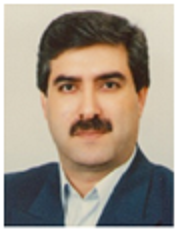The Effect of Extract of Henna Leaves (Lawsonia inermis) on Skin Wound Healing in Wistar Rats
Abstract:
Wound healingis one of the most basic human issues that are facing the beginning of creation. So trying to find the ingredients in the least adverse impact on the healing of human aspirations, especially in the use of medicinal plants can be important. Henna is native to Mediterranean regions, the Near East and India.Hana in Iran in areas south of the country, including Balochistan, Bam Nrmashyr grows. Mostpartsof matureleaves ofhennausedit.Since extracts of Henna (Lawsonia inermis L.) have anti-inflammatory and disinfectant effects, in this research, the effect of hydroalcoholic extract of this plant has been investigated on wound healing. After collecting and drying plant leaves, the hydroalcoholic extract soaking method were prepared and concentrated.Study of 48 male rats Wistar rats weighing 200-210 g were used in the range.Ulcers 3 cm in length on the back of mice were Haayjad and and then were divided into three groups of sixteen: The first group was kept as control without treatment, the second group of Eucerin(negative control), Group III of the ointment made from the henna plant extract based Eucerinwas used once a day. To study wound healing every day was measured during wound And the percentage of wound healing in different groups during all days of treatment based on one way ANOVA and Tukey test were compared. To histological studies, on days 3, 7, 14 and 21 of each group samples of full thickness wounds were removed.Average time of survey complete wound healing in group 3 (treated with henna extract) was lower than of a group 1 (no treatment) and group 2 (treated with Eucerin). Results indicate that the treatment group has the best effect in wound healing in comparison with other groups. It is possible that the components of henna have anti-inflammatory and antibacterial effects, and reduces inflammation, edema and bleeding and also stimulate collagen formation, faster wound contraction, angiogenesis and vasodilatation.
Keywords:
Wound Healing , Extracts ofHenna , Skin , Rat
Language:
Persian
Published:
Journal of Animal Biology, Volume:3 Issue: 4, 2011
Page:
45
magiran.com/p1276520
دانلود و مطالعه متن این مقاله با یکی از روشهای زیر امکان پذیر است:
اشتراک شخصی
با عضویت و پرداخت آنلاین حق اشتراک یکساله به مبلغ 1,390,000ريال میتوانید 70 عنوان مطلب دانلود کنید!
اشتراک سازمانی
به کتابخانه دانشگاه یا محل کار خود پیشنهاد کنید تا اشتراک سازمانی این پایگاه را برای دسترسی نامحدود همه کاربران به متن مطالب تهیه نمایند!
توجه!
- حق عضویت دریافتی صرف حمایت از نشریات عضو و نگهداری، تکمیل و توسعه مگیران میشود.
- پرداخت حق اشتراک و دانلود مقالات اجازه بازنشر آن در سایر رسانههای چاپی و دیجیتال را به کاربر نمیدهد.
In order to view content subscription is required
Personal subscription
Subscribe magiran.com for 70 € euros via PayPal and download 70 articles during a year.
Organization subscription
Please contact us to subscribe your university or library for unlimited access!



